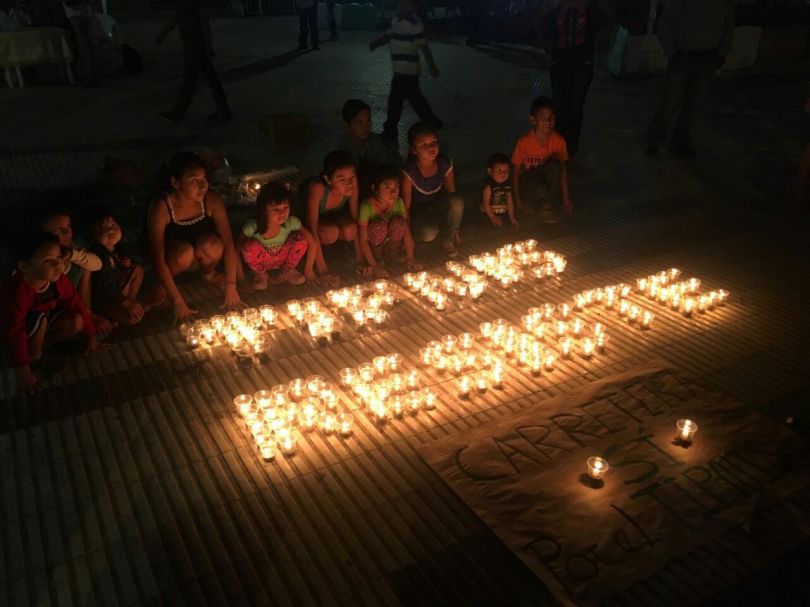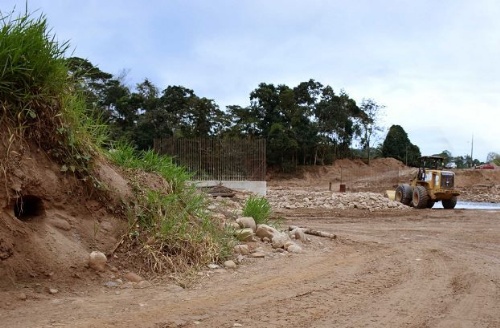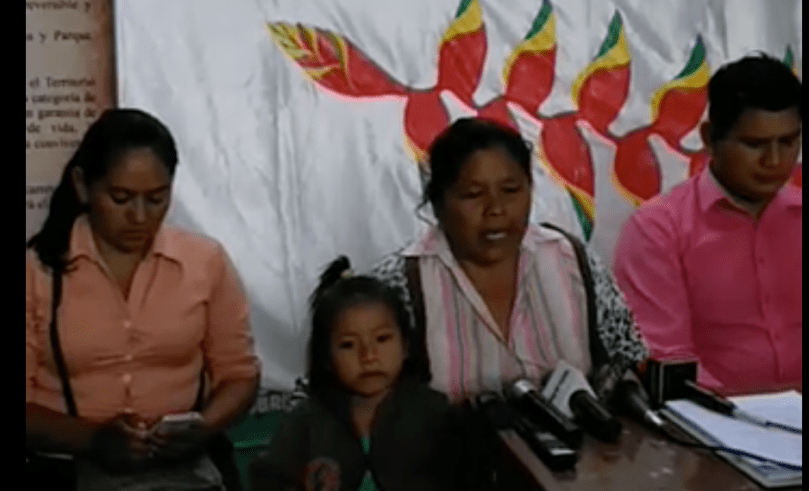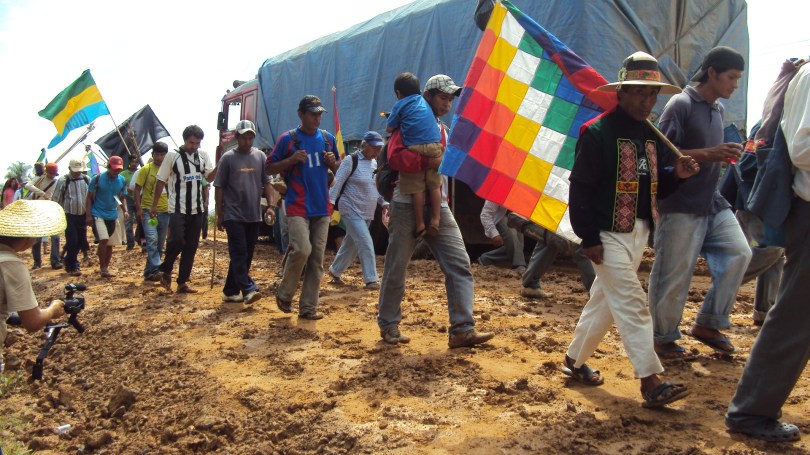An article published Monday in CounterPunch has resurfaced a narrative that frames Bolivian indigenous and environmentalist movements (particularly the campaign in defense of TIPNIS) as a stalking horse for United States-backed efforts to remove and replace the Evo Morales government. The accusation is false, although like many conspiratorial narratives it weaves together facts, half-truths, inventions, and genuine moral feelings into a plausible narrative. Since the particular narrative involves a solidarity letter that I largely drafted, and it keeps cropping up even after six years, I will address it here.
The allegation that opposition to the Evo Morales government is coordinated by the United States (or the domestic right-wing opposition) is rooted in a real history. US government opposition is real and well-known. Morales’ Movement Towards Socialism–Political Instrument for the Sovereignty of the Peoples (MAS-IPSP) and Morales’ Chapare cocalero base were principal targets of a US-backed drug war, which they resisted. When the MAS-IPSP emerged as a political force, the United States government acted to resist its rise, supported his opponent in the 2005 presidential election, and encouraged establishment political forces when they regrouped in a separatist movement governing between four and six of Bolivia’s nine departments. That campaign fell apart in the September 2008 political crisis. So, wariness of the US government as a nexus of opposition is understandable.
However, the Bolivian government has indiscriminately accused large mass mobilizations from below and from the left of being right-wing- or US-controlled fronts. In 2010 and 2011 alone, the government alleged that the CIDOB indigenous confederation, the Potosí regional strike (in a region that voted over 70% for the MAS-IPSP), and the general strike by the Bolivian Workers Central (the national trade union confederation) were all covert attempts at a coup and fronts for anti-Evo conspiracies. A Google search for “Evo Morales” “ve conspiración” derecha reveals more recent examples of allegedly conspiring groups: cooperative miners, Achacachi peasants, opponents of the election procedures for the judiciary, and former Human Rights Ombudsman Rolando Villena.
Given the president’s life story, I empathize with his tendency to see a conspiracy behind every opponent. But empathy is not validation.
Here’s why these charges are baseless in this case:
The lowland indigenous movement was not, and is not engaged in regime change, nor has it ever posed an existential threat to the Morales government. This should go without saying, but a movement whose force is primarily moral self-sacrifice, demonstrated through arduous cross-country marches, hunger strikes, and vigils is not going to expel Morales from power. The solidarity efforts that paralyzed several regions of the country with general strikes in late September and early October 2011 were aimed at winning a protection law for TIPNIS, legislation that required votes from MAS-IPSP representatives. There’s no regime change here at all.
The notion of outside control over a highly arduous form of protest like the CIDOB/CONAMAQ marches has always been absurd. The risks and effort involved cannot be bought, certainly not by the kind of organizational training initiatives that USAID provided to CIDOB well before the march. The decision to begin the march, and to continue with the march in the face of tear gas and mass arrest, was made by these movements themselves.
The United States government, alleged by this narrative to be coordinating opposition to the road, has never opposed the TIPNIS highway, nor has it coordinated any significant press push around the issue.
The international solidarity campaign for TIPNIS was built around movement-to-movement contacts between activists outside Bolivia and inside Bolivia, drawing on a long tradition of solidarity with both the anti-imperial vision of grassroots protest in Bolivia and global efforts for environmental sustainability and indigenous rights. The September 2011 letter spoke directly from that position:
As supporters of justice, indigenous rights, and environmental sustainability on a global scale, we have closely watched events in Bolivia since the turn of the century. We have observed and supported Bolivian social movements’ challenges to neoliberal economic policies and to the privatization of water and other natural resources. We value the proactive diplomacy of the Plurinational State of Bolivia insupporting the rights of indigenous peoples, meaningful and effective responses to climate change, recognition of the right to water and sanitation, and formal acknowledgement by the State of the rights of ecosystems and the biosphere as a whole.We have also watched with great interest and respect as Bolivians sought to incorporate these principles into their Constitution of 2009 and their national laws, including the Law on the Rights of Mother Earth. We are pleased that Bolivia has proactively asserted the place of international civil society in the global debate on climate change, particularly in Copenhagen and by hosting the World Peoples’ Summit on Climate Change and the Rights of Mother Earth in Cochabamba in April 2010 and we look forward to participating in the 2nd Summit next spring. However, the country’s pioneering work on all these issues also comes with a great responsibility. Bolivia’s continued ability to press forward this vital agenda willbe affected by its consistency and moral credibility on matters of human rights and environmental protection.
Solidarity campaigns with TIPNIS have in all ways been much stronger and larger within Bolivia than outside of it. The letter’s 59 foreign signatories and two Bolivian signatories reflect nothing more than that it was an international solidarity letter. At the same time as we were finding signers for the letter, street protests occurred in eight of nine departmental capitals, a 24-hour general strike of the COB labor union confederation was held in solidarity, and department-wide strike was held in Beni. The Beni Civic Committee coordinated a general strike and coordinated road blockades in the capital Trinidad, Santa Rosa, San Borja, Riberalta, and Rurrenabaque. The Beni strike extended through a third day, with the participation of unions of teachers, bank workers, shopkeepers, and health workers. On that third day, September 28, the Bolivian Worker’s Central called for a general strike, which affected nearly all major cities and in the tradition of “mobilized strikes” generated large afternoon rallies. Attendance was estimated at over 10,000 in La Paz and in the town of Riberalta, Beni. In Cochabamba, teachers, university students, and municipal workers blockaded major avenues while the public transport system observed a general closure. When the march finally reached La Paz in mid-October, tens of thousands of Paceños lined the route or joined in, while the capital city’s Mayor gave the marchers a key to the city.
Stansfield Smith writes in Counterpunch that “all international issues can only be understood in the context of the role and the actions of the US Empire,” but what he effectively means is that all domestic issues in Bolivia are international issues. And, in his view, they can only be understood as struggles between an “anti-imperial” government and critics who are presumed to be tools of imperialism. We have seen that the government freely makes such accusations, often against former and future allies, without evidence. In the case of Bolivian lowland indigenous movement and critical domestic NGOs, accusations of conspiring with foreign powers have become a mechanism of control. Pretending that we are resisting imperialism by ignoring grassroots social movements does a disservice to the real work of solidarity.
Feature photo by @MiriamJemio




 Despite the legal prohibition on Segment II, TIPNIS community members have
Despite the legal prohibition on Segment II, TIPNIS community members have 
 Even before this approval, the Senate’s Committee on Land, Territory, Natural Resources and Environment put the legislation on its agenda (see image to the right). Minutes later, a vote in that committee
Even before this approval, the Senate’s Committee on Land, Territory, Natural Resources and Environment put the legislation on its agenda (see image to the right). Minutes later, a vote in that committee 







